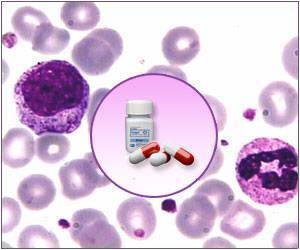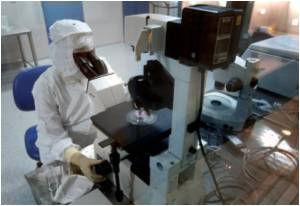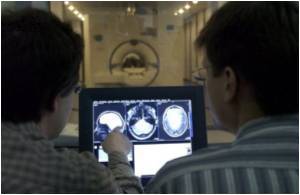Researchers have developed a novel method for determining how ready acute myeloid leukemia (AML) cells are to die, at Dana-Farber Cancer Institute.

In a study published in the Oct. 12 issue of the journal Cell, the researchers report that their findings may lead to improved tests to predict which patients successfully treated for AML can continue in remission with standard chemotherapy alone, and which patients are likely to relapse despite additional treatment, but might benefit from a bone marrow transplant.Anthony Letai, MD, PhD, senior author of the paper, said the study’s results also help to explain the "therapeutic index" of AML chemo drugs: That is, how a patient’s normal blood-forming stem cells can survive chemotherapy doses that kill the leukemia cells.
Unlike current predictive tools, the new method determines the degree to which an individual patient’s AML cells are "primed to die" by apoptosis, or programmed cell death. Chemotherapy is more effective when the cancer cells are well along the path to self-destruction, while patients with less-primed leukemia cells are more likely to suffer fatal relapse without a bone marrow transplant, said the researchers. "Our data suggest that applying our assay in addition to conventional indicators yields a much better predictive tool," said Letai. "We plan to confirm this in independent experiments, and then test its performance prospectively in clinical trials to see if we can use it to do a better job of assigning individualized therapy in AML."
According to the American Cancer Society, an estimated 13,780 cases of AML will be diagnosed in the United States this year, and more than 10,000 people are expected to die from AML, making it the most lethal form of leukemia in the U.S.Currently, clinicians try to predict an AML patient’s outcome by assessing the cancer cells’ pathological features and whether the cells contain certain mutations that suggest a poorer response. But these indicators do not provide a biological explanation for patients’ differing responses to treatment, noted Letai. The method described in the new study takes a different approach, first described by Letai in 2011 paper. It employs a technique called "BH3 profiling" to measure the readiness of mitochondria – tiny organelles within the cell – to unleash chemical compounds that cause the cell to destroy itself.
The self-destruction process, called apoptosis, is triggered by "death molecules," whose mission is to eliminate unneeded or dangerously damaged cells from the body. The study’s authors called this readiness for apoptotic self-destruction "mitochondrial priming. "BH3 profiling involves exposing cancer cells to BH3 molecules, which mimic the protein death signals in the body. If the cancer cells’ mitochondria membrane is rapidly and easily disrupted, then the cells are considered to be highly primed for death. If the mitochondria strongly resist the disruption, the leukemia cells are further from self-destruction and less likely to respond to chemotherapy.Applying the method to stored AML patient samples, "We found that mitochondrial priming measured by BH3 profiling was a determinant of initial response to induction [initial] chemotherapy, relapse following remission, and requirement for allogeneic bone marrow transplantation," the authors wrote. Moreover, knowing whether a patient is likely to have a complete response to chemotherapy would be also very useful in personalizing chemotherapy decisions even when bone marrow transplant is not a consideration. "In elderly patients with AML, chemotherapy can be very toxic with an increased risk of fatal complications," said Letai. "You don’t want to give chemotherapy unless you know whether it will benefit.
Now we can predict who will benefit from it and who won’t -- and should receive an alternative treatment. " The scientists measured mitochondrial priming in normal hematopoietic stem cells that generate all the cells of a healthy person. These stem cells were found to be less-primed for self-destruction than the leukemia cells that were readily killed by chemotherapy. Patients with AML who had responded poorly to chemotherapy had cancer cells that were even less-primed than normal hematopoietic stem cells. Thus it was not surprising that doses of chemo that spared their blood stem cells were not effective against their leukemia. However, the researchers found that AML cells – even the treatment-resistant ones – had a potential weakness that might be exploited.
Advertisement
Source-Eurekalert










